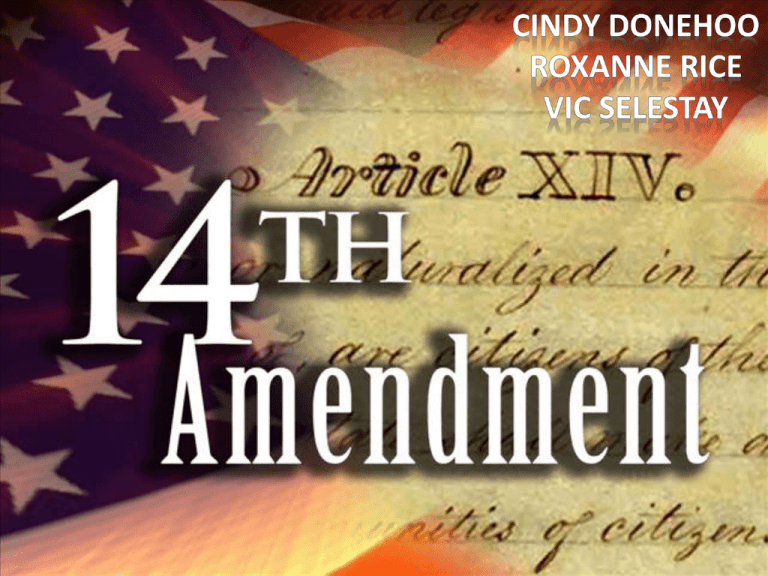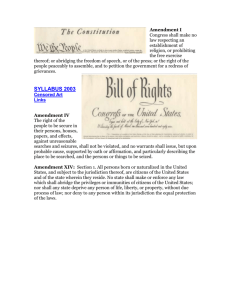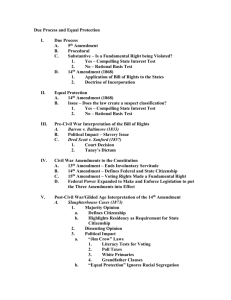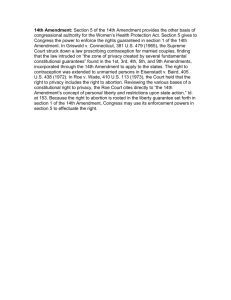Close Reading
advertisement

•The 14th Amendment was ratified in 1868 as a result of the Civil War/Reconstruction. •Section 1 defines citizenship as all persons born or naturalized in the United States, as well as provides due process protections at the state level. •We chose this topic because it crosses all middle school content areas. •This amendment can be used in future lessons as background information. Close Reading: 1. What words do you notice? 2. What is the intent of this document? Sourcing: 1. Identify the document. 2. What is the author’s intention? Contextualization: 1. When would this amendment have been added? 2. This amendment would be in response to what events? AMENDMENT XIV Section 1. All persons born or naturalized in the United States, and subject to the jurisdiction thereof, are citizens of the United States and of the State wherein they reside. No State shall make or enforce any law which shall abridge the privileges or immunities of citizens of the United States; nor shall any State deprive any person of life, liberty, or property, without due process of law; nor deny to any person within its jurisdiction the equal protection of the laws. “14th Amendment to the U.S. Constitution: Civil Rights (1866).” National Archives. http://www.ourdocuments.gov/doc.php?flash=true&doc=43 (June 25, 2012). Close Reading: 1. What do you see in this image? 2. Who do the men represent? Sourcing: 1. What is the author’s intention? 2. What judgments can we make about the author? Contextualization: 1. Who is the audience? 2. What relevant events occurred prior to this image? Corroboration: 1. How does this image relate to the 14th Amendment? 2. How are the two sources similar and different? Adler, John. “A Man Knows a Man.” Harper Weekly. http://14thamendment.harpweek.com/ (June 25, 2012). •Students will begin by examining the 14th Amendment document and practice historical thinking skills. •Students will then examine the political cartoon related to the 14th Amendment using historical thinking skills. •Students will corroborate the two sources. •Students will complete a formative assessment. What about women and Native Americans? •What two ways can an individual become a citizen? •Why would this amendment have been unpopular when it was ratified? •In whose eyes? •Besides citizenship, what other main element is described?





